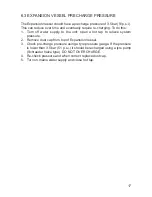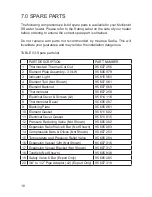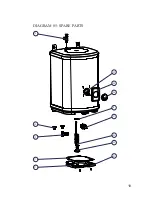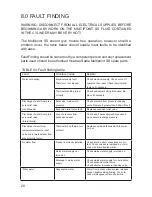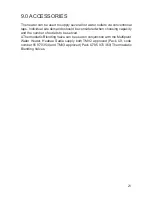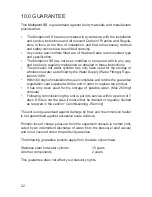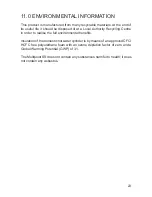
10
The expansion relief valve is to be operated regularly to remove lime deposits
and to verify that it is not blocked.
The discharge pipe connected to the pressure relief device is to be installed
in a continuously downward direction and in a frost free environment
G3 GUIDANCE SECTION 3.9
The discharge pipe (D1) (see Diagram 03, page 12) from the vessel up to
and including the tundish is generally supplied by the manufacturer of the hot
water storage system. Where otherwise, the installation should include the
discharge pipe(s) (D1) from the safety device(s). In either case the tundish
should be vertical, located in the same space as the unvented hot water
storage system and be fitted as close as possible and within 600mm of the
safety device e.g. the temperature / pressure relief valve.
The discharge pipe (D2) from the tundish should terminate in a safe place
where there is no risk to persons in the vicinity of the discharge, preferably
be of metal and:
a. Be at least one pipe size larger than the nominal outlet size of the safety
device unless its total equivalent hydraulic resistance exceeds that of a
straight pipe 9m long i.e. discharge pipes between 9m and 18m equivalent
resistance length should be two pipe sizes larger, and so on. Bends must
be taken into account in calculating the flow resistance. Refer to table 02
page 12 and the worked example.
b. Have a vertical section of pipe at least 300mm long below the tundish before
any elbows or bends in the pipework.
c. Be installed with a continuous fall.
d. Have discharges visible at both the tundish and final point of discharge,
but where this is not possible or is practically difficult there should be clear
visibility at one or other of these locations.
An alternative approach for sizing discharge pipes would be to follow
BS6700:1987 Specification for design, installation, testing and maintenance of
services supplying water for domestic use within buildings and their cartilages,
appendix E, section E2 and table 21.
Examples of acceptable discharge arrangements are:
i. Ideally below a fixed grating and above the water seal in a trapped gully.
ii. Downward discharges at low level; i.e. up to 100mm above external
surfaces such as car parks, hard standings, grassed areas etc. are

















